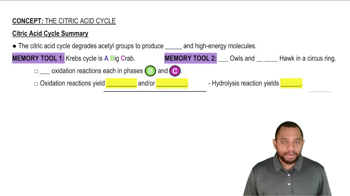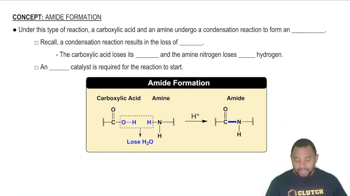Which of the following molecules will produce the most ATP per mole?
e. α-ketoglutarate or fumarate in one turn of the citric acid cycle
 Verified step by step guidance
Verified step by step guidance Verified video answer for a similar problem:
Verified video answer for a similar problem:



 :50m
:50mMaster Phase A - Citrate Formation Concept 1 with a bite sized video explanation from Jules
Start learning